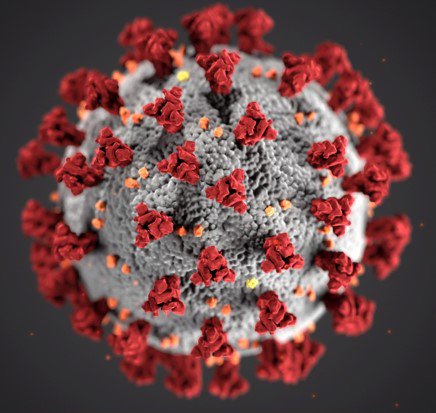DIAGNOSIS OF CORONAVIRUS DISEASE 2019 (COVID-19)
 The outbreak of the coronavirus disease 2019 (COVID-19) emphasized the need for fast, sensitive, and specific diagnostic tools for virus surveillance. The diagnosis of the acute phase of the COVID-19 is based on direct detection of either viral antigens or viral RNAs in nasopharyngeal, oropharyngeal, or midturbinate swab samples. Antigen-targeting tests are simple to use, have fast turnaround times, and allow rapid testing for point-of-care applications. However, compared with viral RNA-targeting tests, their sensitivity is low, especially during the initial stages of the disease, which limits their adoption and implementation.
Direct detection of severe acute respiratory syndrome coronavirus-2 (SARS-CoV-2) RNA is based on amplification of the specific viral RNA sequences by quantitative RT-PCR (RT-qPCR), which theoretically allows for the detection of as little as a single copy of a target RNA. Overall, the RT phase, real-time monitoring, and the high number of amplification cycles (45) are time consuming, and therefore the turnaround time of a standard RT-qPCR system is 90 to 120 minutes, which hinders its use for rapid screening.
In reverse transcription loop-mediated isothermal amplification, nicking and extension amplification reaction and RT-PCR–based assays, the products of the reaction are visualized by either detection of increased fluorescence or a simple color change. To reach a detectable fluorescent signal or a color change and retain high sensitivity, long reaction times are used. To minimize the turnaround time while maintaining high sensitivity and specificity, new optical detection methods must be explored.
Therefore, we have developed in our lab, a new molecular assay that combines a highly sensitive magnetic modulation biosensing (MMB) system, rapid thermal cycling, and a modified double-quenched hydrolysis probe. In vitro, transcribed SARS-CoV-2 RNA targets spiked in PCR-grade water, were used to show that the calculated limit of detection of the MMB-based molecular assay was 1.6 copies per reaction. Testing 309 RNA extracts from 170 confirmed RT-qPCR SARS-CoV-2–negative individuals (30 of whom were positive for other respiratory viruses) and 139 RT-qPCR SARS-CoV-2–positive patients (CT ≤ 42) resulted in 97.8% sensitivity, 100% specificity, and 0% cross-reactivity. The total turnaround time of the MMB-based assay is 30 minutes, which is three to four times faster than a standard RT-qPCR.
The outbreak of the coronavirus disease 2019 (COVID-19) emphasized the need for fast, sensitive, and specific diagnostic tools for virus surveillance. The diagnosis of the acute phase of the COVID-19 is based on direct detection of either viral antigens or viral RNAs in nasopharyngeal, oropharyngeal, or midturbinate swab samples. Antigen-targeting tests are simple to use, have fast turnaround times, and allow rapid testing for point-of-care applications. However, compared with viral RNA-targeting tests, their sensitivity is low, especially during the initial stages of the disease, which limits their adoption and implementation.
Direct detection of severe acute respiratory syndrome coronavirus-2 (SARS-CoV-2) RNA is based on amplification of the specific viral RNA sequences by quantitative RT-PCR (RT-qPCR), which theoretically allows for the detection of as little as a single copy of a target RNA. Overall, the RT phase, real-time monitoring, and the high number of amplification cycles (45) are time consuming, and therefore the turnaround time of a standard RT-qPCR system is 90 to 120 minutes, which hinders its use for rapid screening.
In reverse transcription loop-mediated isothermal amplification, nicking and extension amplification reaction and RT-PCR–based assays, the products of the reaction are visualized by either detection of increased fluorescence or a simple color change. To reach a detectable fluorescent signal or a color change and retain high sensitivity, long reaction times are used. To minimize the turnaround time while maintaining high sensitivity and specificity, new optical detection methods must be explored.
Therefore, we have developed in our lab, a new molecular assay that combines a highly sensitive magnetic modulation biosensing (MMB) system, rapid thermal cycling, and a modified double-quenched hydrolysis probe. In vitro, transcribed SARS-CoV-2 RNA targets spiked in PCR-grade water, were used to show that the calculated limit of detection of the MMB-based molecular assay was 1.6 copies per reaction. Testing 309 RNA extracts from 170 confirmed RT-qPCR SARS-CoV-2–negative individuals (30 of whom were positive for other respiratory viruses) and 139 RT-qPCR SARS-CoV-2–positive patients (CT ≤ 42) resulted in 97.8% sensitivity, 100% specificity, and 0% cross-reactivity. The total turnaround time of the MMB-based assay is 30 minutes, which is three to four times faster than a standard RT-qPCR.
Our paper on clinical diagnosis of coronavirus disease 2019 (COVID-19) was published at the Journal of Molecular Diagnostics. The paper, entitled: "A Magnetic Modulation Biosensing-Based Molecular Assay for Rapid and Highly Sensitive Clinical Diagnosis of Coronavirus Disease 2019 (COVID-19)" can be found in the Publications section, and at DOI:10.1016/j.jmoldx.2021.08.012.
